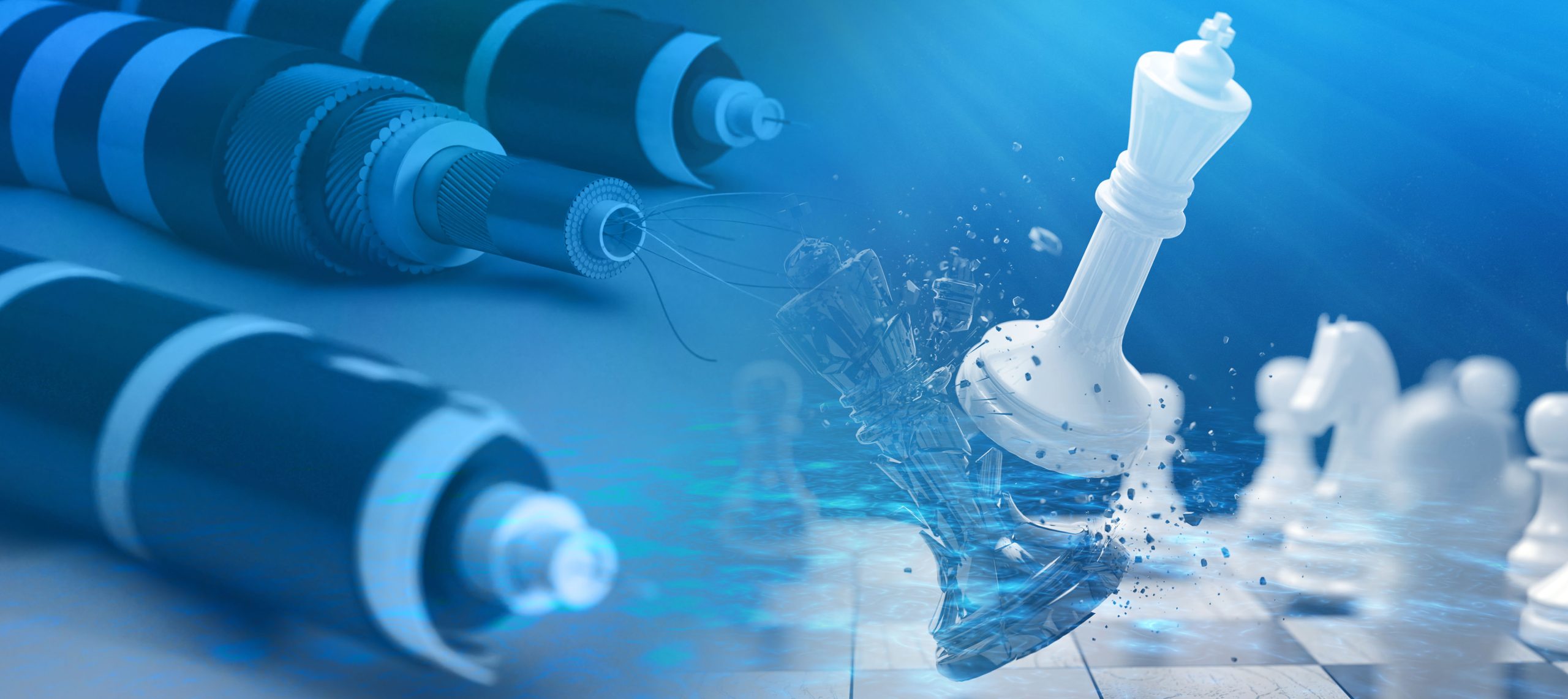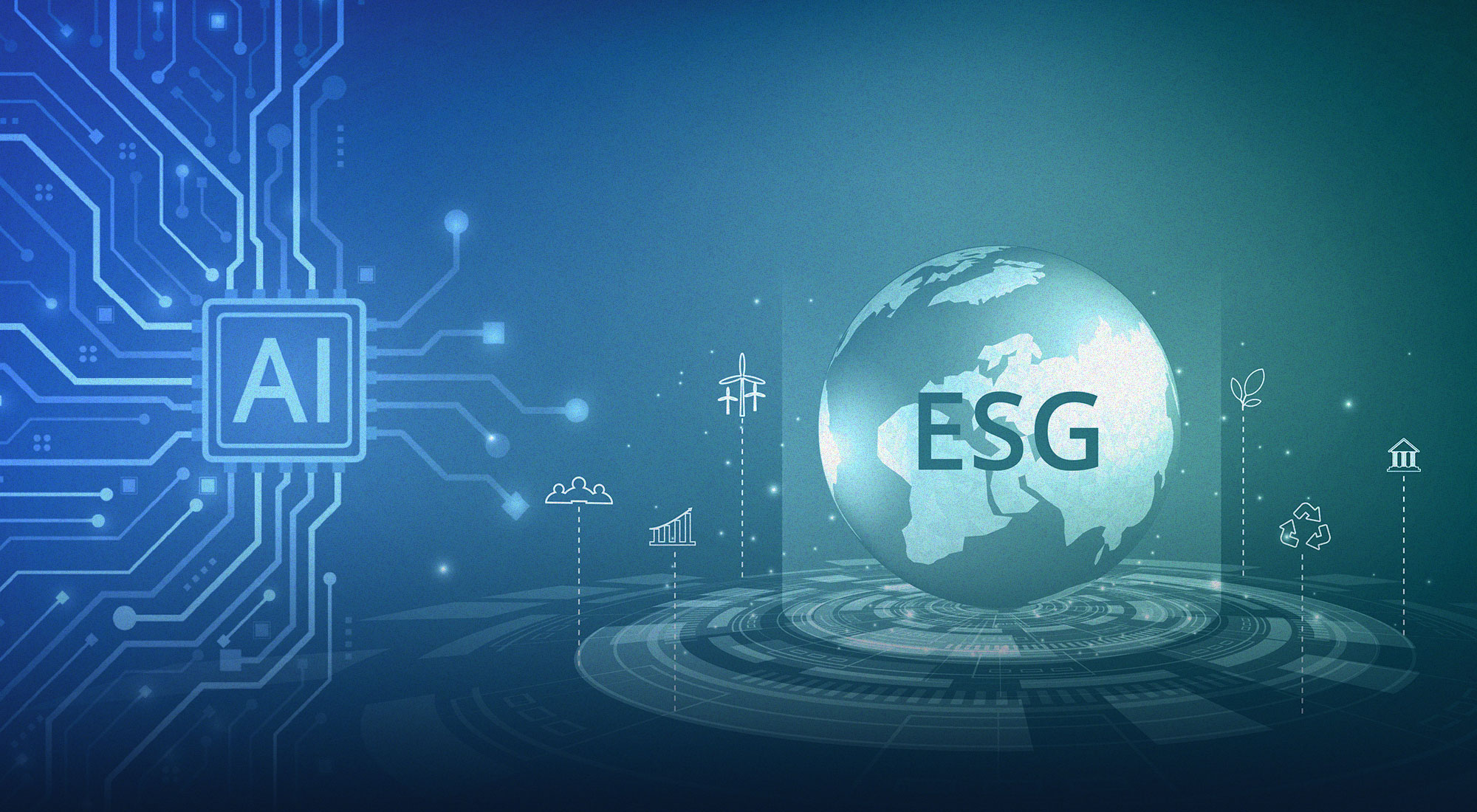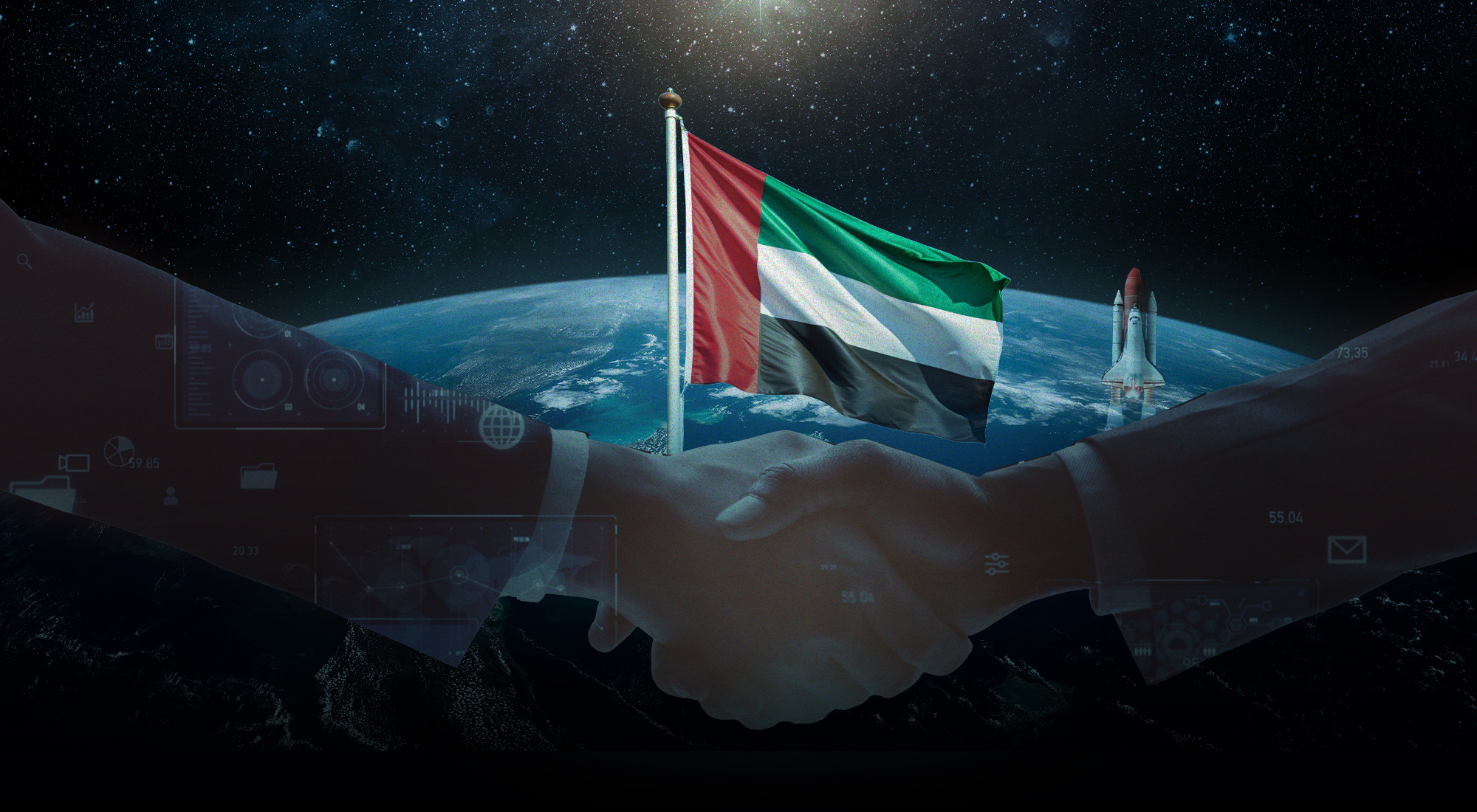Introduction
It is difficult to exaggerate the importance of undersea cables to the functioning of the world’s economy. Over 97% of global communications are still transmitted via cables lying deep beneath the oceans.[1] The ability to transmit confidential information, to conduct financial transactions, and to communicate internationally all depend upon a global network of physical cables lying under the sea. Admiral James Stavridis, US Navy (Ret), former NATO Supreme Allied Commander, was not exaggerating when he wrote: “It is not satellites in the sky, but pipes on the ocean floor that form the backbone of the world’s economy.”[2]
While the 1980s saw significant amounts of international data traffic transmitted via satellite, this has been in decline since the early 1990s when the advent of fiber-optic technology finally eclipsed copper-based cabling. Not only do fiber-optics transfer data five times faster than satellites, but they do so at a vastly lower cost.[3] Comprising more than half a million miles of fiber-optics, this network is, according to a 2017 report by the now-UK Prime Minister, Rishi Sunak, “the indispensable infrastructure of the 21st century.”[4] In the words of Federal Reserve Chief of Staff Steve Malphrus: “When communications networks go down, the financial services sector does not grind to a halt. It snaps to a halt.”[5]
Given the importance of this physical network, state leaders should care greatly about any threats to its disruption. Undersea infrastructure is arguably emerging as a key battleground for geopolitical competition. The 2022 attempted cyber-attack on an underwater cable linking the US state of Hawaii’s telephone, internet, cable and mobile phone service,[6] the explosion of the Nord Stream 2 gas pipeline on the Baltic Sea’s seabed, and the reported severing of two Shetland Island cables off the coast of Scotland demonstrated that critical infrastructure is far from off limits in conflict between great powers.[7] The geopolitical reality emerging is one that stems from the recognition that the maritime foundations of the international order stand vulnerable to state coercion. Intact and functioning undersea cables are simply a sine qua non for nations’ economic prosperity and political stability. This infrastructure is an attractive target for those who wish to do others harm.[8]
This research article first identifies the network’s key vulnerabilities. It then delves into ways and means whereby geopolitical rivals might seek to take advantage of the undersea cables at the expense of others or how they may attack it outright. The article concludes with recommendations about how to make the network more robust through greater public-private cooperation.
Inherently vulnerable
On one level, undersea cables are extremely reliable. The standard measure of cable downtime is seconds per year.[9] Yet, cables face challenges that other critical infrastructures do not. A bevy of hazards—from sharks, to ship anchors, to earthquakes—can damage undersea cables. Damage not only causes massive inconveniences, but it can also lead to major financial loss. Damaged cables could be out of use for days or weeks because repairing cables is neither easy nor cheap. Vast distances and isolation of the network makes both damage prevention and repair daunting tasks. What is more, repairs to damaged cables are a complex undertaking. They are carried out either by specialized ships with small submersibles on the seabed to investigate and repair severed cables using robotic arms, or by divers if the damaged section is in shallower waters. Not only does it often take specialized ships and equipment days to reach the site of the breach, but they then can also take days to fix it. This can mean a total downtime of one to two weeks, as the case of Fiji’s undersea cable severance showed in January 2022.[10]
The characteristics of the cable network makes it inherently vulnerable to attack. The location of almost every undersea cable in the world is publicly available and known, making them uniquely vulnerable to hostile actors. Also, they are usually concentrated near one another, both undersea and on land. In part to reduce costs and in part because it is hard to find geographically suitable landing sites, for instance, multiple cables often come ashore at a single site. Similar topographical and cost considerations obtain at sea. “Funneled through exposed choke points,” Rishi Sunak warns, “the arteries upon which the Internet and our modern world depends have been left [emphasis added] highly vulnerable.”[11] An example of the vulnerability associated with this geographical concentration can be seen in events in 2006 in the Luzon Strait, a 160 mile stretch of open water between Taiwan and the northernmost island of the Philippines. The Strait represents the only viable route (the waters between China and Taiwan are too shallow) for undersea cables to connect Hong Kong, Taiwan, South Korea, and Japan. An earthquake off Taiwan that year triggered massive undersea landslides that severed six out of the seven undersea cables used to distribute internet and phone services from North America to Taiwan, China, Hong Kong, Japan, Singapore and South Korea.[12] These nations had non-existent or very slow internet access for several weeks. It took a dozen ships seven weeks to complete repairs. All the while the economies of these important nations relied on a single remaining fiber-optic cable “no thicker than a hosepipe.”[13] The 2006 incident is also a reminder that there is no alternative to undersea cables; satellite technology cannot effectively handle the communications requirements of modern nations’ digital economies and their societies.
Routine faults caused by hazards—damage to cables from fishing activity, for example—typically result in limited disruption for advanced economies because their cable networks are diversified and thus they have spare capacity for data to be rerouted. For developing economies with less cable capacity, however, accidental damage can have far more serious consequences. In July 2017, for instance, Somalia suffered a near total internet outage for three weeks because of offshore cable damage.[14] It was even worse in 2013, when the nearly 25,000-kilometer Asia-Africa-Europe-1 Internet cable connecting Hong Kong to Marseille, France, and passing through the South China Sea, the Indian Ocean, the Red Sea, and the Mediterranean, was cut. Providing internet access to more than twelve countries, millions of people faced an immediate loss of online access. Ethiopia lost 90 percent of its connectivity; Somalia nearly 85 percent.[15]
Given that much of our global economy and communication rests on these flimsy tubes under the sea, it comes as no surprise that the network’s inherent vulnerability makes it an inviting target for attack, for both state and non-state actors. As such, we can expect to see geopolitical rivals to look increasingly at moving into a position of advantage vis-à-vis each other by exploiting the importance and vulnerability of this infrastructure.
Attacking indispensable infrastructure
With the rise in geopolitical tensions and the real prospect of war between great powers in the future, the undersea cable network is becoming a significant battleground. An all-out attack upon undersea cable infrastructure by a hostile actor would potentially be catastrophic in terms of its impact on connectivity. Even relatively limited sabotage has the potential to cause significant economic disruption and damage to military communications.
The most obvious way to attack cables is to cut them, and rival states have been cable-cutting for longer than most analysts realize. Immediately after Britain declared war on Germany in 1914, for example, the Royal Navy quietly cut all five of the undersea telegraph cables which Germany relied upon for trans-Atlantic communications.[16] Though, historically, cable-cutting is a challenging undertaking given the depths involved, the barriers to entry for successful attacks on cable infrastructure are certainly lower than they used to be—and lowering. In a conflict scenario with a state actor in possession of mature naval capabilities, attacks against undersea cables could be executed relatively easily, with submarines targeting multiple cables simultaneously in order to potentially cause full-scale outages. Undersea cables face protection challenges similar to large sonar arrays for antisubmarine warfare: they are exposed in many places and hard to protect.[17]
While attacks from cable-cutting specialized submarines or mine-laying unmanned underwater vehicles (UUVs) is perhaps the greatest threat, a successful attack could only require unsophisticated and widely available equipment. Cables at sea are located hundreds if not thousands of miles from anywhere or anything that can detect and monitor the presence of a hostile maritime actor. With the maturing and proliferation of UUV technology, for instance, it is even easier for a greater range of hostile actors to carry out an attack while reducing risk to themselves. Attacks may be unattributed if that is what the attackers desire. Rapid developments in UUVs equipped with high-resolution sonar and explosives mean that states with modest resources—or shadowy actors with only tenuous ties to a state—could soon possess the means to cause massive damage to the undersea cable network at relatively little cost. Belligerents will not need to maintain expensive conventional subsurface forces to carry out attacks on the infrastructure.
Rival actors need not even bother with more involved efforts at attacking cables undersea. They can choose to attack cables on dry land. As noted, cables are highly concentrated in a small number of landing sites, which may be less-than-secure and present vulnerable targets for non-state armed groups like terrorists or state actors motivated by rivalry or war. The 2013 attack against the Asia-Africa-Europe-1 Internet cable occurred on Egyptian soil, where the cable briefly passes from the Red Sea to the Mediterranean. In addition, cyber-attacks against network management systems used to control cable infrastructure have the potential to hand hackers a kill-switch to the connectivity of entire regions.
Network domination and techno-economic leverage
Perhaps the most compelling point related to attacks against our undersea communication infrastructure is that malicious actors do not need to threaten or perpetrate attacks on cables or related infrastructure at all. They can simply control and dominate undersea cable networks to coerce or punish rival actors or enemies. By dominating a network—the building/control of new networks or the control of existing networks—governments could use techno-economic advantage and control of cables for political leverage. A state dominating a network could threaten free access to the internet to those to whom the cables reach. It could create a dependence on the network controlling country for most core digital technologies, making nations vulnerable to cyber-attacks.[18]
China, for example, is exploiting network vulnerability by muscling into the undersea cable networks, funding projects on favorable terms as an undersea extension of its Belt and Road Initiative (BRI).[19] This is by strategic design as Chinese leaders understand well the importance of controlling, accessing, and dispensing information and intelligence. The “Made in China 2025” strategic plan aims for China to control 60 percent of the global fiber-optic market by 2025. Accordingly, of the seven major fiber-optic cable companies in the world, five are now Chinese and include Huawei, ZTE, and China Telecom.[20]
The US, Japan and other states have voiced concerns over China’s potential undersea cable dominance. The 8,000 kilometer-long Hong Kong-US undersea cable project was to have connected Los Angeles with Hong Kong, which has been a Special Administrative Region (SAR) of China since 1997. But big American companies like Meta (formerly Facebook) departed from the project due to increasingly strident warnings from the US government over concerns that Chinese state-owned companies involved in the project may be asked to steal sensitive data transmitted via the cables.[21] Instead, Meta, Google and other American tech giants, are building several cables between the US and Asia that bypass China. Taiwan’s biggest internet and communications provider, Chunghwa Telecom, has joined forces with Google and other American and Asian operators to build the so-called Apricot cable. It is partially financed by Meta and is due to connect Taiwan, Japan, Singapore, Indonesia, the Philippines, and Guam sometime in 2024.[22] Australia, as a continental island with its commensurately mammoth concerns over connectivity, recently funded a cable to Papua New Guinea, also an island state, so that the latter did not become dependent on Chinese cables.[23]
Geopolitics of public vs. private
A major factor that complicates undersea cable protection for some states is that they are largely owned and installed by private communications companies, as can be seen by the involvement of Meta and Chunghwa Telecom. Cables are generally financed by consortia of telecommunications firms or, increasingly, tech giants. No individual cable operator is thinking about the system security as a whole or is seemingly thinking about the geopolitical challenges ahead. In addition, private owners have up until now largely showed an unwillingness to take on the costs of enhancing protection measures. Even their governments have not yet given enough thought to mitigating the risks of attacks on this infrastructure or how control of parts of the network could be geopolitically charged.
The private ownership of undersea cables has meant that many governments, until very recently, have not taken the same active role as in other strategic industries, such as energy and shipping. Moreover, because undersea cables “fly no flag” (i.e., they are mostly private concerns), they are not legally associated with any particular state. This complicates the status of cables under international law. The 1982 United Nations Convention on the Law of the Sea (UNCLOS), for example, in no way prohibits states from treating undersea cables as legitimate military targets during wartime.
There are many measures that states like France, India, or Japan, could undertake to increase resilience, often alongside private companies. How nations can channel the power of their tech companies is emerging as an essential element of statecraft for geopolitics.[24] States could require cable owners to place relatively cheap sensors that detect sonar frequencies near key undersea infrastructure and along cable routes. If states feel the network is threatened, they could mine the approaches to the cables with devices capable of distinguishing between friendly ships and submarines and those of an adversary based on acoustic signature.[25] States can harden the stations where the data cables come ashore and make them hard to find by making them indistinguishable from other nondescript military buildings. Most importantly, states can work with the private sector and overseas governments to promote the greater geographic diversity of undersea cables and better deployment of redundant “dark cables” to build resilience in the cable system.
The very nature of today’s geopolitical competition means that certain states – on account of their politico-economic systems – do things very differently and, thus, have upended the way the undersea cable has been “played” since the end of the Cold War. Specifically, we have seen the entry of major state-owned or affiliated/financed cable installers and operators from China, Russia, and other states, where the difference between public and private is often blurred. This means issues about undersea cable security, competition, and dominance are purposely in-built into the policies promulgated by Beijing, for example. The entry of major Chinese state-owned companies like ZTE into the world of installing and operating undersea cable networks, coupled with a broad rise in geopolitical competition over the past decade, has served as a wake-up call for rival states like Japan and Australia that bears some resemblance to the kerfuffle over 5G networks, which are largely dominated by Chinese companies like Huawei. Some cable companies, it seems, do “fly a flag” after all, and are intent on enhancing their home state’s security and global prominence. The reaction, as discussed vis-à-vis American, Taiwanese, and Japanese companies, is for governments to sound warnings about potential data breaches, network dominance by rival companies that have the backing of a state, and attacks borne out of rising geopolitical tensions. The easygoing age of undersea cables as a common good appears to be ending abruptly.
References
[1] APEC Policy Support Unit, Economic Impact of Submarine Cable Disruptions, December 2012, http://bitly.ws/yzJ2.
[2] Comments by Admiral James Stavridis in a foreword to Rishi Sunak, in Undersea Cables: Indispensable, Insecure (London: Policy Exchange, 2017): p. 9, http://bitly.ws/yzJD.
[3] Caroline Elliott, Omar Al-Tabbaar, Artur Semeyutin, and Eric Tchouamou Njoya, An Economic and Social Evaluation of the UK Subsea Cables Industry, Research Report Commissioned by Subsea Cables UK and the Crown Estate, December 2016, http://bitly.ws/yzL2.
[4] Rishi Sunak, Undersea Cables: Indispensable, Insecure (London: Policy Exchange, 2017): p. 5, http://bitly.ws/yzJD.
[5] Quoted in Karl Frederick Rauscher, “Proceedings of the Reliability of Global Undersea Cable Communications Infrastructure Study & Global Summit,” IEEE Communications Society (2010), http://bitly.ws/yzLW.
[6] Peter Boylan, “Cyberattack on Hawaii Undersea Communications Cable Thwarted by Homeland Security,” Star Advertiser, April 12, 2022, http://bitly.ws/yzM8.
[7] Edward Stringer, “Putin Knows that Undersea Cables Are the West’s Achilles Heel,” Financial Times, November 4, 2022, http://bitly.ws/yzMc.
[8] Alessio Patalano, “Understanding AUKUS,” Australian Strategic Policy Institute (ASPI), September 19, 2022, http://bitly.ws/yzMm.
[9] Karl Frederick Rauscher, “Proceedings of the Reliability of Global Undersea Cable Communications Infrastructure Study & Global Summit,” IEEE Communications Society (2010), http://bitly.ws/yzLW.
[10] Praveen Menon and Tom Westbrook, “Undersea Cable Fault Could Cut Off Tonga from Rest of the World for Weeks,” Reuters, January 18, 2022, http://bitly.ws/yzMG.
[11] Rishi Sunak, Undersea Cables: Indispensable, Insecure (London: Policy Exchange, 2017): p. 5, http://bitly.ws/yzJD.
[12] “Earthquake Shakes the Internet,” New Scientist, January 3, 2007, http://bitly.ws/yzMM.
[13] Robert Martinage, “Under the Sea: The Vulnerability of the Commons,” Foreign Affairs 94, no. 1 (2015), https://www.jstor.org/stable/24483224.
[14] “Somalia Back Online after Entire Country Cut Off from Internet for Three Weeks,” The Guardian, July 18, 2017, http://bitly.ws/yzNL.
[15] Matt Burgess, “The Most Vulnerable Place on the Internet,” Wired, November 2, 2022, http://bitly.ws/yzNP.
[16] Rishi Sunak, Undersea Cables: Indispensable, Insecure (London: Policy Exchange, 2017): p. 5, http://bitly.ws/yzJD.
[17] See Tom Stefanick, Strategic Antisubmarine Warfare and Naval Strategy (Lexington, Mass.: Lexington Books, 1987): p. 38.
[18] Comments made to journalists by Bob Work, undersecretary of defense under the Obama and Trump administrations. Cited in Catherine Buchaniec, “US Approaching ‘Critical Time’ in Tech Race with China, Report Says,” C4ISRNET, September 19, 2022, http://bitly.ws/yzPj.
[19] Edward Stringer, “Putin Knows that Undersea Cables Are the West’s Achilles Heel,” Financial Times, November 4, 2022, http://bitly.ws/yzMc.
[20] Francesco Bechis, “Undersea Cables: The Great Data Race Beneath the Oceans,” ISPI, May 31, 2021, http://bitly.ws/yzPJ.
[21] Drew FitzGerald and Newley Purnell, “Facebook Drops Plan to Run Fiber Cable to Hong Kong Amid U.S. Pressure,” Wall Street Journal, March 10, 2021, http://bitly.ws/yzPY.
[22] “TSMC and Submarine Cables Among Priorities in Taiwan’s Economic Security Strategy,” Intelligence Online, September 3, 2021, http://bitly.ws/yzQ7.
[23] Australian High Commission Papua New Guinea, “Coral Sea Cable System launched,” http://bitly.ws/yzQm.
[24] Brendon J. Cannon, “Technology and Trust Set AUKUS Apart from the Rest,” Trends Research & Advisory, April 19, 2022, http://bitly.ws/yzQx.
[25] Andrew S. Erickson, Lyle J. Goldstein, and William S. Murray, Chinese Mine Warfare: A PLA Navy ‘Assassin’s Mace’ Capability, Study No. 3 (Newport, R.I.: China Maritime Studies Institute/U.S. Naval War College, 2009).








